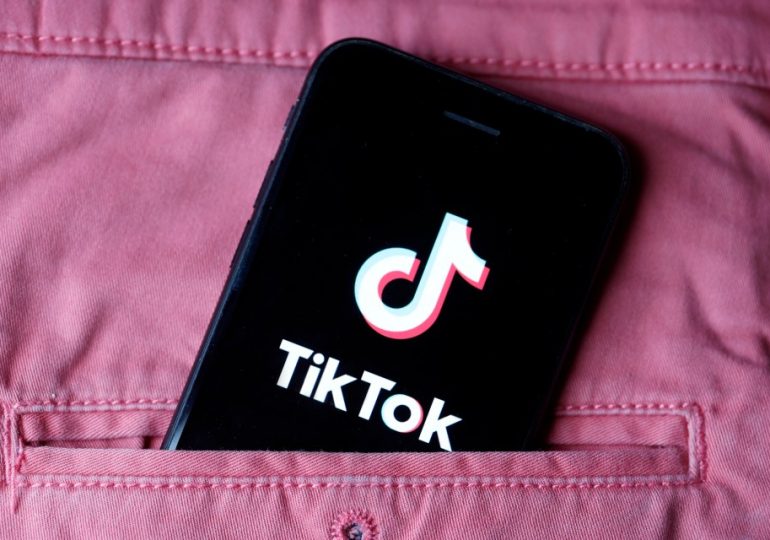TIKTOK might be “dulling” children’s brains as experts warned about the worrying effects on their intellectual development.
As millions of youngsters scroll away, one psychiatrist claimed that rampant screen usage can lead to lower attention spans, poor academic performance and low IQ levels.
GettyExperts say ‘TikTok brain’ is a real phenomenon associated with the negative cognitive effects in users[/caption]
GettyThe rampant usage of fast-paced social media has seen children lowering their attention spans[/caption]
PAProfessor Stephen Scott CBE told The Sun some of the effects of social media like TikTok, video games, and screens on the brain[/caption]
One expert explained how “TikTok brain” can be a real phenomenon consuming children’s minds and altering their online and offline behaviour.
And another revealed how some changes in children’s brains are similar to those in Alzheimer’s patients.
Like other social media platforms, TikTok can be addictive, leading to excessive use and negative impacts on mental health and well-being.
Reduced attention span, increased impulsivity, and a tendency to seek instant gratification are just a few of the worrying symptoms.
Experts revealed that users constantly scrolling through short, engaging videos can find it harder to focus on longer tasks or activities.
The fast-paced nature of TikTok can also lead to impulsive behaviour, such as making quick decisions without fully considering the consequences, they claimed.
A disrupted sleep pattern is said to be another consequence as scrolling late at night can interfere with sleep, leading to fatigue and decreased cognitive function, the New York Post reports.
Some users can even experience self-esteem issues as the constant exposure to curated content and idealised images can contribute to feelings of inadequacy or low self-esteem.
Excessive use of screens and social media can also detract from time that could be spent on more productive activities, such as work, studying, or hobbies, a psychiatrist told The Sun.
A TikTok spokesperson told The Sun: “TikTok is a 13+ platform. We provide our younger community members with tailored support to ensure they can develop a healthy relationship with screen time.”
According to the spokesperson, users aged 13-17 will automatically be set to a 60-minute daily screen time limit.
Should young people decide to opt out of this limit, the platform prompts them to set a screen time limit for themselves if they spend more than 100 minutes a day on TikTok.
The company added that accounts aged 13-15 do not receive push notifications from 9 pm and accounts aged 16-17 have push notifications disabled starting at 10 pm.
Meanwhile, those aged 13-17 receive a weekly inbox notification which recaps their screen time.
TikTok offers screen time tools including time limits, time prompts, sleep reminders and “friendly video reminders to take breaks.”
There’s also an in-app dashboard that shows data on screen time.
However, evidence suggested that children under the age of 13 were still able to create an account, according to the Guardian.
BRAIN SLOWING DOWN
Stephen Scott CBE, psychiatrist and professor of child health and behaviour at King’s College London, explained the effects of social media like TikTok, screens and video games on child development.
He told The Sun: “Behaviourally – when you test kids who have a lot of screen time, with some of them going up to six hours a day – you become less able to control your impulses.
“Biologically, what we are wired to do is to scan the horizon, have a look , back in the day we had to look out for threats, animals, everything like that. It’s a good characteristic to have.
“But particularly social media and video games bombard the brain with stimuli. And so, it gets over-excited.”
The brain regions, even after kids stop playing a game, increase its need for immediate rewards and reduce the attention span, he explained.
“It’s very competitive, it’s almost addictive. People immediately want hit rewards and things like that.”
“We haven’t got the studies yet, but many of the changes are those that are seen by people with Alzheimer’s disease
Stephen Scott CBE
Children’s brains continue to develop until they are 25, but a kid’s younger years are their most formative.
Throughout early neurodevelopment, a process called myelination helps provide the foundation for brain connectivity and supports the emergence of cognitive and behavioural functioning.
But according to the expert professor, increased screen time was associated with less myelination.
This means that the speed of signals transmitted between neurons in the brain slows down.
“The study found there was reduced myelination in areas related to attention, cognitive development and intelligence,” Professor Scott said.
“The bit of the brain that wants a reward quickly and immediate gratification gets more stimulated by this stronger use of screens and social media like TikTok, and their ability to sustain concentration is reduced.
GettyYoungsters also have their mental well-being affected[/caption]
GettyThe Chinese app has hundreds of millions of active users[/caption]
“We haven’t got the studies yet, but many of the changes are those that are seen by people with Alzheimer‘s disease.
“So it’ll be interesting to see if they get earlier Alzheimer‘s.”
He added: “ If you’re spending a lot of time on your phone, you’re not doing other things.
“You’re not socialising with your friends. You’re not taking part in conversations. You become more and more distant.”
Professor Scott, a consultant child and adolescent psychiatrist at Maudsley Hospital, added: “I can think of a 12-year-old I saw recently.
“She was doing very well, got good grades at school, but got given a phone by her parents and now spends four or five hours a day on the phone.
These youngsters are now going to struggle with in the way that they’re communicating
Zoe Cairns
“She’s an only child, and the parents find it difficult to take it away.
“She’s stopped doing homework and gone down.
“So it is like an addiction for some kids, not for all kids.”
Despite its negative cognitive effects, Professor Scott does not think that TikTok and social media in general are all bad, as many of his patients often come to him to reveal the many things they learn on the video platform at a very young age.
These can range from history and geography to global politics.
He added that other networks such as Facebook and WhatsApp can also be beneficial to keeping in touch with friends and distant relatives, for instance.
“TikTok and social media have many good effects, but we meet in the end to talk about how parents can supervise this,” Professor Scott explained.
A Forbes article saw TikTok and social media labelled as “digital crack cocaine”, but Professor Scott disagrees with the term.
GettyExperts explained that short attention spans can jeopardise children’s academic performance[/caption]
GettyBut they also argued that the video platform can also be a great learning tool[/caption]
He said: “For some children, I’ll be a little bit more moderate about it. And again, it’s a question of how much.
“I mean, alcohol can ruin your life, but actually in moderate amounts, it can be rather fun.
“So it’s about how much and how often.”
“But you can imagine if you’re a single or lone parent and you’ve got a job, and you come home and you’ve got stuff to do, it’s very convenient to give the phone to the kid.
“They get on and they shut up for a bit.”
A GOOD TOOL
Social media consultant Zoe Cairns explained how “TikTok brain” can change children’s online behaviour in how they consume content.
She told The Sun: “The phenomenon around the TikTok brain is about how they [young people] are consuming short-form video content so it’s actually decreasing their attention span.
“What we see on TikTok – even though Snapchat started it – is mainly short form video.
“It’s quick video clips that they can quickly go through.
“And what it’s going to do is that now the long form communication is what these youngsters are now going to struggle with in the way that they’re communicating, the way that they’re digesting that content.”
“TikTok will have a variety of mental health issues, but it can also have a positive effect in terms of these people becoming really intelligent
Zoe Cairns
But Cairns also explained how much of this phenomenon has some element of scaremongering as parents are sometimes scared of what might happen to their children.
She said: “There’s always going to be someone that’s going to scaremonger.
“What parents and people need to be doing is doing their own research, but also looking out for the symptoms from their young people to see if this is actually affecting them.”
Despite its addictive features, the expert argued that the video platform can also be a great learning tool.
She said: “From my point of view, I would say that TikTok has got very much education.
“There’s knowledge, there’s information that children are digesting.
“It’s not just entertaining videos. There’s also stuff that they’re learning about as well.
“So there’s some positives and there’s some negatives.”
Cairns went on to describe how TikTok can cause more effects on youngsters other than a shortened attention span as they can become more anxious and secluded.
She explained: “Anxiety is one of them [symptoms]. People will become introverted, they become very quiet. They might not talk about how they feel.
“You will find that they have more in depth knowledge around things, but they might not necessarily communicate.
“So it will have a variety of mental health issues, but it can also have a positive effect in terms of these people becoming really intelligent.
AFPScrolling late at night can disrupt your sleep pattern[/caption]
GettyA social media consultant also revealed that ‘addicted’ social media users can become more secluded[/caption]
“They’re knowledgeable, they know the facts and different sides of stories that are happening because they’ve done their research.
The endless scroll on TikTok can somehow stimulate a “carrot in a stick” behaviour in users, when users endlessly swipe their fingers up in search of an “even more interesting” video, or find the ones that got lost once the feed refreshed.
But she explained that a new in-app feature implemented with Google can help users avoid doom scrolling.
Cairns said: “One of my bugbears is when you find something, you click on it and then you go back to the feed and it’s disappeared because your feed’s refreshed.
“But TikTok now brought search into the platform, which is relatively new.
“They’re working alongside Google in terms of search results. It’s going to make it easier for people to just put a keyword to find a particular video they want to see.”
The expert also told The Sun how longer videos are now being implemented in social media as a whole, and that could hopefully serve as a brake to the rampant content consumption.
She said: “Most of the platforms now, a little bit like how YouTube is, they’ve got their short and they’ve got their long form content.
“So now we can go up to 15 minutes on a TikTok video. And now Instagram are doing the same. They’ve actually increased it to three minutes.
“So we can actually now people can create content that is going to be more long form.
“A lot of the platforms are encouraging people to do this, and so the algorithms are looking at those new features and concentrating on those new features. Some more and more people will start to use that longer form content.”
From my point of view, I would say that TikTok has got very much education
Zoe Cairns
Offline, Cairns believes that governments must also be putting in policies to protect its users.
She said: “ I think that more infrastructure, more systems need to be put into place. More policies need to be put into place about how we protect our young people through usage.
“But also working with the platform in terms of the algorithms to protect our young people in turn.
“And it’s not just young people, it’s everyone, people that are vulnerable.
“Even us as adults, when we have a low day, if we see something on there that just changes our mindset, then there needs to be something in place that is going to protect us, our security, our vulnerabilities, our mental well-being.”
‘DIGITAL CRACK COCAINE’
TikTok currently has 1 billion monthly active users worldwide since its launch in 2016, Search Logistics reports.
The Chinese platform can be addictive for some people due to its engaging content, personalised feed, and endless scroll feature, which can keep users hooked for long periods of time.
Bingeing on an infinite stream of 15-to-30-second-long videos reduces our attention span in ways that no other sort of media does, reports socialmediapsychology.eu.
And the fact that regular users spend hours more on TikTok than on more traditional social media platforms further exacerbates the issue.
Short-term memory and concentration are also impacted.
Devoted TikTok users describe being unable to focus on lengthier video formats, let alone reading a book or doing homework.
A study by dot.LA found that longer videos are perceived as “stressful” by 50% of users.
Although the platform did add lengthier video forms of up to 10 minutes earlier in 2022 in an effort to vary their advertising palette, advertisers are aware that very short videos remain the most engaging content type for young consumers.
In 2022, the ideal duration of TikTok films is expected to be between 21 and 34 seconds, according to Flixier.
Other social networks start to feel “slow” and monotonous when contrasted to this fast-paced software that delivers new material with the swipe of a thumb.
TikTok’s feed is also very much addictive by design.
Unlike Facebook and Instagram, which generally feed us material from people or businesses we already follow, the video app centres around the feature of endless scrolling, pouring out algorithm-based recommendations for amusing videos by all sorts of unknown “creators”.
The content-detection system is specifically designed and regularly modified to fit users’ interests and keep them on the site for as long as feasible.
TikTok could be seen as a platform that encourages social voyeurism.
A study by Frontiers found user created material to be the most addicting sort of content for young people who mostly use the app to binge on the lives of strangers.
TikTok is based on the psychological concept of random reinforcement: the unending video stream is addictive in and of itself, since we anticipate to receive a reward (in the shape of a hilarious video, followed by a shot of dopamine in the brain) at any moment.
TikTok can bee seen as akin to gambling since it has dopamine spikes that occur in fast succession, with research showing that addiction eventually shrinks the human brain.
An MRI research from 2013 revealed that online game addiction causes structural shrinkage in the frontal brain.
Another 2018 study found that children aged 9-10 who use smartphones for more than seven hours per day experience visible atrophy in their brains.
This may seem like a lot, but recent data shows that average screen time has increased to 4-6 hours for children aged 8-12 and more than 8 hours for teenagers since the pandemic began, reports socialmediapsychology.eu.
TikTok’s entertainment-focused algorithm is constantly evolving depending on each individual user’s tastes, allowing it to cure boredom virtually instantly.
This comes at a cost, however: a reduced capacity to occupy oneself without the app, followed by a growing reliance on it.
One study from the University of Bologna discovered that boredom in children and teenagers is connected to increasing access to technology, which exacerbates digital addiction.
Our brains process visual information more quickly than words.
This is why videos will always outperform text-based content on the internet, while children’s reading abilities will lag behind their social media habits.
Still, TikTok is more damaging to the development of reading habits among younger users than most other social media sites, simply because it lacks text.
However, we cannot completely blame TikTok: all of the so-called “traditional” social media platforms have begun to mimic the addictive aspects of the micro video app in order to entice younger viewers with catchy video content.
YouTube added Shorts, and Instagram expanded its Reels, all in an effort to replicate the TikTok experience and remain relevant.









